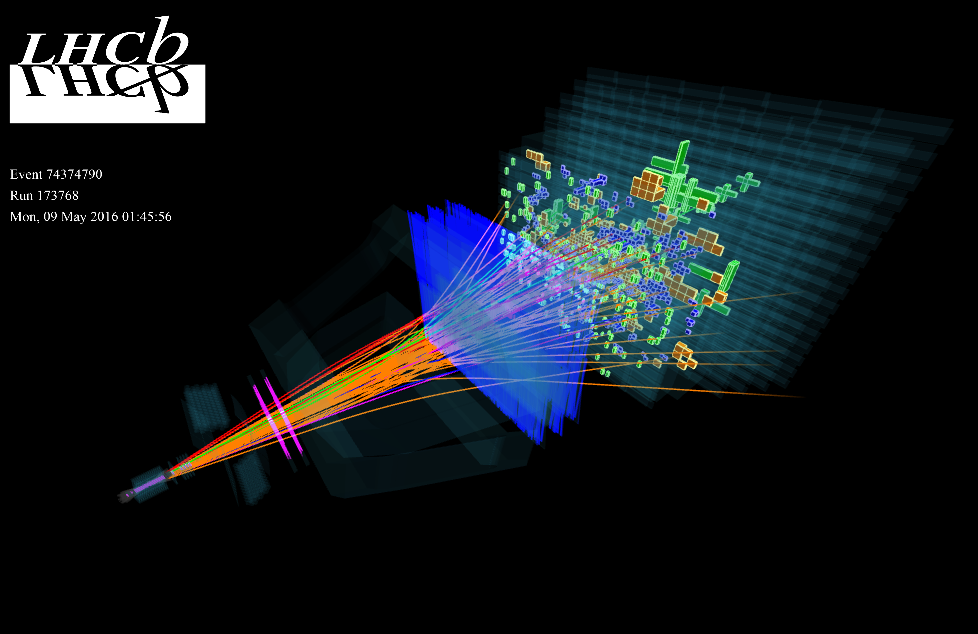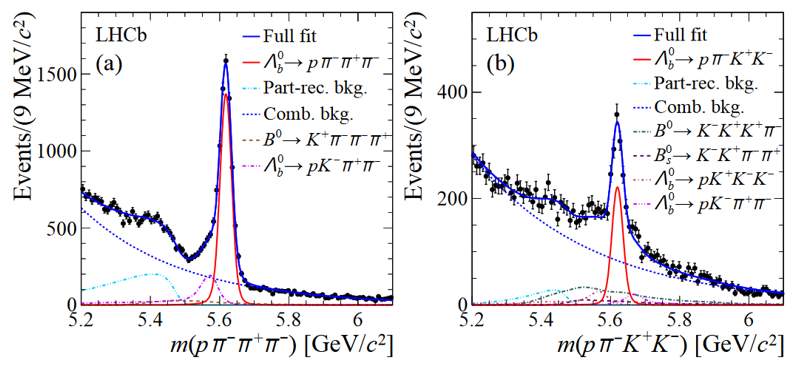LHCb - where has all the antimatter gone?
LHCb is an experiment set up to explore what happened after the Big Bang that allowed matter to survive and build the Universe we inhabit today.

The LHCb collaboration has published in Nature Physics the first evidence for the violation of the CP symmetry in baryon decays with statistical significance of 3.3 standard deviations (σ). CP violation has been observed in K and B meson decays, but not yet in any baryon decay. If the measurement is confirmed with a statistical significance of 5σ using a larger data sample, it will be the first time that an asymmetry in the decay rate of baryon and an anti-baryon is observed. In the quark model of particle physics mesons are composed of a quark and antiquark pair while baryons (anti-baryons) are composed of three quarks (anti-quarks).
In order to obtain this result LHCb physicists made the first observation of Λb0 beauty baryon decays into four other particles pπ-π+π- and pπ-K+K-, as seen in the images above showing accumulation of events at the Λb0 mass. About 6000 and 1000 decays were found for the two decay modes, respectively. The beauty baryon Λb0 is composed of udb quarks and its mass is about 6 times the mass of a neutron (udd).
The groups of Nicola Serra and Ueli Straumann are involved in detector operation, detector upgrade and physics analyses.
